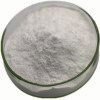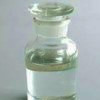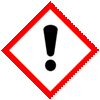10-Undecenoic acid, Undec-10-enoic acid, Undecylenic acid BP or Undecenoic acid USP Grade Manufacturers, with SDS GHS MSDS Sheet |
Supplier, Manufacturer, Exporter of Undecylenic acid or Undecenoic acid, Muby Chemicals of Mubychem Group, established in 1976, is the original manufacturers of Specialty Chemicals, Pharmaceutical Excipient, Fragrance Food & Flavor chemicals, Reagent Grade Chemicals, Shale Gas Fracturing Chemicals in India. Mubychem Group has several manufacturing facilities spread across Western India and world wide contacts and toll manufacturers. We are exporting globally to countries like USA, Canada, Europe, UAE, South Africa, Tanzania, Kenya, Egypt, Nigeria, Cameroon, Uganda, Turkey, Mexico, Brazil, Chile, Argentina, Dubai, Korea, Vietnam, Thailand, Malaysia, Indonesia, Australia, China, Germany, France, Italy, Portugal etc. The products are offered as per required specifications and in correct shape and size in mm or meshs or microns as specified by the buyer. The participating units have one or more accreditations like FDA - cGMP and GLP approval, ISO-9001 Certified, "REACH" Registered, ISO-14001, ISO/IEC 17025, ISO-22000, FSSC 22000, ISO 45001, Kosher Certified, Halal Certified, HACCP, FSSAI. We offer Commercial Pure & IP BP EP Ph Eur USP NF JP FCC Food Grade Analytical Reagent Grades of Chemicals |
| Bookmark this Web Site -- or -- Email This Page Info to a Colleague or Yourself |
Search our website here:









10-Undecenoic acid or Undec-10-enoic acid or Undecylenic acid or Undecenoic acid: CAS Number: 112-38-9, EINECS EC Number: 203-965-8, Molecular Formula: CH2=CH(CH2)8COOH, Molecular Weight: 184.28, HS Code ---**
How big is your requirement or how small
We serve it all.
Specifications, Safety Data Sheet, Manufacturing process details, Wholesale retail buy sell prices, Uses etc available on line in these pages for Undecylenic acid or Undecenoic acid.
For SDS MSDS Sheet Click
SDS MSDS Sheet of Undecylenic acid or Undecenoic acid Manufacturers
Undecylenic acid
Undecenoic acid Pure BP USP Grade Suppliers

Undecylenic Acid or Undecenoic Acid is an organic compound with the formula CH2=CH(CH2)8CO2H. It is an unsaturated fatty acid. It is a colorless oil. Undecylenic acid is used for the treatment of fungal infections of the skin, but it is also a precursor in the manufacture of many pharmaceuticals, personal hygiene products, cosmetics, and perfumes. Undecylenic acid or Undecenoic Acid is an active ingredient in medications for skin infections, and to relieve itching, burning, and irritation associated with skin problems. For example, it is used against fungal skin infections. Undecylenic acid has been used as a linking molecule.
Specifications of Undecenoic Acid BP Grade, Ph Eur:
C11H20O2 --- 184.3 --- CAS 112-38-9
DEFINITION
Undec-10-enoic acid.
Content: 97.0 per cent to 102.0 per cent.
CHARACTERS
Appearance: White or very pale yellow, crystalline mass or colourless or pale-yellow liquid.
Solubility: Practically insoluble in water, freely soluble in ethanol (96 per cent) and in fatty and essential oils.
IDENTIFICATION
A. Refractive index: 1.447 to 1.450, determined at 25 ± 0.5C.
B. Freezing point: 21C to 24C.
C. To 2.0 g add 2 mL of freshly distilled aniline and boil under a reflux condenser for 10 min. Allow to cool and add 30 mL of ether. Shake with 3 quantities, each of 20 mL, of dilute hydrochloric acid and then with 20 mL of water. Evaporate the organic layer to dryness on a water-bath. After re-crystallising twice from ethanol (70 per cent V/V) and drying in vacuo for 3 h, the residue melts at 66C to 68C.
D. Dissolve 0.1 g in a mixture of 2 mL of dilute sulfuric acid and 5 mL of glacial acetic acid. Add dropwise 0.25 mL of potassium permanganate solution. The colour of the potassium permanganate is discharged.
TESTS
Peroxide value: Maximum 10.
Fixed and mineral oils: To 1.0 g add 5 mL of sodium carbonate solution and 25 mL of water and boil for 3 min. The hot solution is not more opalescent than reference suspension.
Water-soluble acids: To 1.0 g add 20 mL of water heated to 35-45C and shake for 2 min. Cool and filter the aqueous layer through a moistened filter. To 10 mL of the filtrate add 0.1 mL of phenolphthalein solution. Not more than 0.1 mL of 0.1 M sodium hydroxide is required to change the colour of the indicator.
Degree of unsaturation: Dissolve 85.0 mg in a mixture of 5 mL of dilute hydrochloric acid and 30 mL of glacial acetic acid. Using 0.05 mL of indigo carmine solution as indicator, added towards the end of the titration, titrate with0.0167 M bromide-bromate until the colour changes from blue to yellow. 8.9 mL to 9.4 mL of0.0167 M bromide-bromate is required. Carry out a blank titration.
Sulphated ash: Maximum 0.1 per cent, determined on 0.50 g.
ASSAY: Dissolve 0.750 g in 10 mL of ethanol (96 per cent). Titrate with 0.5 M sodium hydroxide using 0.1 mL ofphenolphthalein solution as indicator, until a pink colour is obtained.
1 mL of 0.5 M sodium hydroxide is equivalent to 92.14 mg of C11H20O2.
STORAGE
In a non-metallic container, protected from light.
Specifications of Undecylenic Acid USP Grade:
C11H20O2 --- 184.28
10-Undecenoic acid.
10-Undecenoic acid --- [CAS 112-38-9].
Undecylenic Acid contains not less than 97.0 percent and not more than 100.5 percent of C11H20O2.
Identification:
A: To 1 mL add potassium permanganate, dropwise: the permanganate color is discharged.
B: Place 3 mL of it and 3 mL of freshly distilled aniline in a tall test tube, and heat for 10 minutes at a rate such that the ring of condensate remains just below the mouth of the tube. Cool, add 10 mL of alcohol and 10 mL of ether, and transfer to a separator. Wash the ether solution with four 20-mL portions of water and discard the water washings. Heat on a steam bath until the odor of ether no longer is perceptible, then add a few mg of activated carbon, mix, and filter. Evaporate the filtrate nearly to dryness, and recrystallize the residue from 70 percent alcohol: the anilide so obtained melts between 66 and 67.5 .
Specific gravity: between 0.910 and 0.913.
Congealing range: not lower than 21 .
Refractive index: between 1.447 and 1.448.
Residue on ignition: not more than 0.15%.
Water-soluble acids: Shake 5 mL with 5 mL of water, and filter the water layer through a filter paper previously moistened with water. Add 1 drop of methyl orange, and titrate with 0.01 N sodium hydroxide: not more than 1.0 mL of 0.010 N sodium hydroxide is required to match the color produced by 1 drop of methyl orange in 5 mL of water.
Heavy metals: 0.001%.
Iodine value: between 131 and 138.
Assay: Dissolve about 750 mg of Undecylenic Acid, accurately weighed, in 50 mL of alcohol, add 3 drops of phenolphthalein, and titrate with 0.1 N sodium hydroxide to the first pink color that persists for not less than 30 seconds. Perform a blank determination and make any necessary correction. Each mL of 0.1 N sodium hydroxide is equivalent to 18.43 mg of C11H20O2.
For Original Monographs of IP Indian Pharmacopoeia BP British Pharmacopoeia USP US Pharmacopoeia FCC Food Grade product, please check with the respective web-pages or books.
We manufacture and supply as under:
Manufacturers:
MUBY CHEMICALS
Ambernath Mumbai, Ankleshwar Gujarat, India
TEL: (OFFICE) 91-22-23770100, 23726950
Current Date Time in India GMT+5:30
e-mail: info@mubychem.com
USA, Canada, Mexico and other American
neighbouring buyers may
e-mail: us@mubychem.com
Call toll-free 1-877-682-9243 (1-877-MUBYCHEM)

Copyright and Usual Disclaimer is Applicable.
Last
5 October, 2023




Exporters to USA Canada UAE Europe South Africa Tanzania Kenya Uganda Egypt Nigeria Turkey Mexico Brazil Argentina Chile Dubai etc.
Global or International Suppliers, Exporters, Importers, Manufacturers
I shall pass through this world, but once. If therefore, there is any good that I can do, or if there is any favor that I can show to a fellow human being, let me do it now. Let me not defer or neglect it. For I shall not tread this way again
Undecylenic Acid or Undecenoic Acid SDS, Safety Data Sheet
MSDS Sheet, Material Safety Data Sheet 23-Nov-20
1. Product Identification
Product Name & Other Names: Undecylenic Acid or Undecenoic Acid
CAS No.: 112-38-9
EINECS EC Number: 203-965-8
Molecular Formula: CH2=CH(CH2)8COOH
Molecular Weight: 184.28
Relevant uses and uses advised against (if any): Industrial Manufacturing.
Suppliers: As per letterhead.
2. Hazards Identification
GHS, Globally Harmonized System Classification in accordance with 29 CFR 1910
Hazard Class and Category Code(s), Regulation (EC) No 1272/2008 (CLP)
Skin irritation Category 2, H315
Serious eye damage/eye irritation Category 2A, H319
Specific target organ toxicity - single exposure, Respiratory system. Category 3, H335
Long-term (chronic) aquatic hazard Category 3, H412
Labeling Regulation EC 1272/2008 (CLP) & GHS
| GHS Label Elements  Irritant |
Signal Words: Warning
Hazard statements:
H315: Causes skin irritation.
H319: Causes serious eye irritation.
H335: May cause respiratory irritation.
H412 Harmful to aquatic life with long lasting effects.
Precautionary statements:
P264: Wash … thoroughly after handling.
P280: Wear protective gloves/protective clothing/eye protection/face protection.
P302+P352: IF ON SKIN: Wash with plenty of soap and water.
P305+P351+P338: IF IN EYES: Rinse cautiously with water for several minutes. Remove contact lenses, if present and easy to do. Continue rinsing.
P332+P313: If skin irritation occurs: Get medical advice/attention.
P337+P313: If eye irritation persists: Get medical advice/ attention.
P362: Take off contaminated clothing and wash before reuse.
Classification according to EU Directives 67/548/EEC or 1999/45/EC:
Hazard Symbol:
Xi = Irritant
Risk Phrase:
R36/37/38 = Irritating to eyes, respiratory system and skin.
R53 May cause long-term adverse effects in the aquatic environment.
3. Composition/Information on Ingredients
Product Name & Other Names: Undecylenic Acid or Undecenoic Acid
CAS No.: 112-38-9
EINECS EC Number: 203-965-8
4. First Aid Measures
Always seek medical attention after first aid measures are provided.
Inhalation: If inhaled, remove to fresh air. If not breathing, give artificial respiration. If breathing is difficult, give oxygen and get medical attention immediately.
Ingestion: Never give anything by mouth to an unconscious person. Get medical attention.
Skin Contact: Immediately flush skin with plenty of water for at least 15 minutes while removing contaminated clothing and shoes. Get medical attention. Wash clothing and shoes before reuse.
Eye Contact: Immediately flush eyes with plenty of water for at least 15 minutes, lifting lower and upper eyelids occasionally. Get medical attention immediately.
5. Fire Fighting Measures
Fire: As with most organic solids, fire is possible at elevated temperatures or by contact with an ignition source.
Product of Combustion: Carbon oxides and fumes.
Explosion: Fine dust dispersed in air in sufficient concentrations, and in the presence of an ignition source is a potential dust explosion hazard.
Fire Extinguishing Media: Water spray, dry chemical, alcohol foam, or carbon dioxide.
Special Information: In the event of a fire, wear full protective clothing and NIOSH-approved self-contained breathing apparatus with full face piece operated in the pressure demand or other positive pressure mode. At high temperatures under fire conditions, it may produce toxic or irritating fumes. Fire-extinguishing work is done from the windward and the suitable fire-extinguishing method according to the surrounding situation is used. Uninvolved persons should evacuate to a safe place.
6. Accidental Release Measures
Personal precautions, protective equipment and emergency procedures: Avoid breathing dust/fumes/gas/mist/vapors/spray. Use individual protective equipment (waterproof boots, suitable protective clothing, safety glasses, etc.). Restrict unprotected personnel from the area. Prevent any contact with hot surfaces. Do not approach facing the wind. Do not touch the spilled material.
Environmental precautions: Do not let the product enter drains, soil or water sources.
Methods and materials used for containment Cleanup procedures and Storage:
Small Spill: Use appropriate tools to put the spilled solid in a convenient waste disposal container.
Large Spill: Corrosive solid. Contain spilled material. Stop leak if without risk. Do not get water inside container. Do not touch spilled material. Use water spray to reduce vapors. Prevent entry into sewers, basements or confined areas; dike if needed. Eliminate all ignition sources.
7. Handling and Storage
Precautions for safe handling: Apply according to good manufacturing and industrial hygiene practices. Ensure proper ventilation. Wash thoroughly after handling. Do not drink, eat or smoke while handling. Avoid contact with skin, eyes and clothing. Minimize dust generation. Avoid breathing dust/fumes/gas/mist/vapors/spray. Avoid contact with eyes, skin, and clothing. Keep container tightly closed. Avoid ingestion and inhalation. Use individual protective equipment (waterproof boots, suitable protective clothing, safety glasses, etc.). Prevent any contact with hot surfaces.
Conditions for safe storage, including any incompatibilities: Store in cool, dry and ventilated area away from heat sources and protected from sunlight in tightly closed original container. Keep air contact to a minimum. Do not leave the material container open. Store protected from heat, sparks and ignition sources and incompatible materials. Avoid contact with skin and eyes. Avoid inhalation of dust/mist/vapor. Do not store with incompatible materials like bases, oxidizing agents, reducing agent. Containers may be hazardous when empty since they retain product residues.
8. Exposure Controls/Personal Protection
Airborne Exposure Limits: This product does not contain any hazardous materials with occupational exposure limits established by the region-specific regulatory bodies.
Ventilation System: A system of local and/or general exhaust is recommended to keep employee exposures as low as possible. Local exhaust ventilation is generally preferred because it can control the emissions of the contaminant at its source, preventing dispersion of it into the general work area. Please refer to the ACGIH document, Industrial Ventilation, A Manual of Recommended Practices, most recent edition, for details.
Personal Respirators (NIOSH Approved): For conditions of use where exposure to dust or mist is apparent and engineering controls are not feasible, a particulate respirator (NIOSH type N95 or better filters) may be worn. If oil particles (e.g. lubricants, cutting fluids, glycerin, etc.) are present, use a NIOSH type R or P filter. For emergencies or instances where the exposure levels are not known, use a full-face positive-pressure, air-supplied respirator. WARNING: Air-purifying respirators do not protect workers in oxygen-deficient atmospheres.
Skin Protection: Wear impervious protective clothing, including boots, gloves, lab coat, apron or coveralls, as appropriate, to prevent skin contact.
Eye Protection: Use chemical safety goggles and/or full face shield where dusting or splashing of solutions is possible. Maintain eye wash fountain and quick-drench facilities in work area.
Other Control Measures: Maintain good housekeeping in work area. Dust deposits on floors and other surfaces may pick up moisture and cause the surfaces to become slippery and present safety hazards. Handle in accordance with good industrial hygiene and safety practice. Wash hands after handling.
9. Physical and Chemical Properties
Appearance: Light yellow or white.
Odor: Sweet.
Odor threshold: Not available.
pH: Not available.
Relative density: 0.9
Boiling Point: 275C literature.
Melting Point: 21-24C.
Flash point: 148C.
Auto-ignition temperature: Not available.
Decomposition temperature: Not available.
Upper/lower flammability or explosive limits: Not available.
Vapor pressure: Not available.
Vapor Density (Air=1): Not available.
Evaporation rate: Not available.
Flammability (solid, gas): Not available.
Partition coefficient: n-octanol/water: Not available.
Solubility: Insoluble in water.
Viscosity: Not available.
Molecular Formula: CH2=CH(CH2)8COOH
Molecular Weight: 184.28
10. Stability and Reactivity
Stability: Stable under ordinary conditions of use and storage.
Hazardous Decomposition Products: Fumes, carbon dioxide and carbon monoxide may form when heated to decomposition.
Hazardous Polymerization: Will not occur.
Incompatibilities: Bases, Oxidizing agents, Reducing agent.
Conditions to Avoid: Heat, dusting and incompatibles.
11. Toxicological Information
Oral rat LD50: 2500 mg/Kg
Oral rabbit LD50: >5000 mg/Kg
Carcinogenicity: This product is not classifiable as to its carcinogenicity based on its IARC, ACGIH, NTP, or EPA classification.
Mutagenic Effects: Not available.
Developmental Toxicity: Not available.
Reproductive Effects: No information available.
12. Ecological Information
Environmental Fate: Sufficient information is not available.
Environmental Toxicity: No information found.
13. Disposal Considerations
Whatever cannot be saved for recovery or recycling should be managed in an appropriate and approved waste disposal facility. Processing use or contamination of this product may change the waste management options. State and local disposal regulations may differ from federal disposal regulations. Dispose of container and unused material in accordance with legal requirements.
14. Transport Information
DOT USA, TDG Canada & ADR/RID Europe: Not Regulated.
IMDG/IMO & IATA/ICAO: Not Regulated.
15. Regulatory Information
USA:
SARA 313 Not applicable.
SARA 311/312 Hazard Categories See section 2 for more information.
Section 16 - Additional Information
DISCLAIMER: The information and recommendations set forth herein (hereinafter "Information") are presented in good faith and believed correct as of the date hereof. It is compiled from various sources and it is not necessarily all inclusive nor fully adequate in every circumstance. In addition, these suggestions should not be confused with nor followed in violation of applicable laws, regulations, rules or insurance requirements applicable. This MSDS sheet is intended only as a guide to the appropriate precautionary handling of the material by a properly trained person using this product. Individuals receiving the information must exercise their independent judgment in determining its appropriateness for a particular purpose.
Disclaimer:
**************************
Our company provides this MSDS sheet in good faith but makes no representation as to its comprehensiveness or accuracy. This SDS sheet is intended only as a guide to the appropriate precautionary handling of the material by a properly trained person using this product.
The above information has been compiled from various sources and has the possibility of discrepancy and being out-dated information. Individuals receiving the
information must exercise their independent judgment and do further search in determining its appropriateness for a particular purpose. In no case shall our company
be liable to loss or damages by the product user.
**************************















